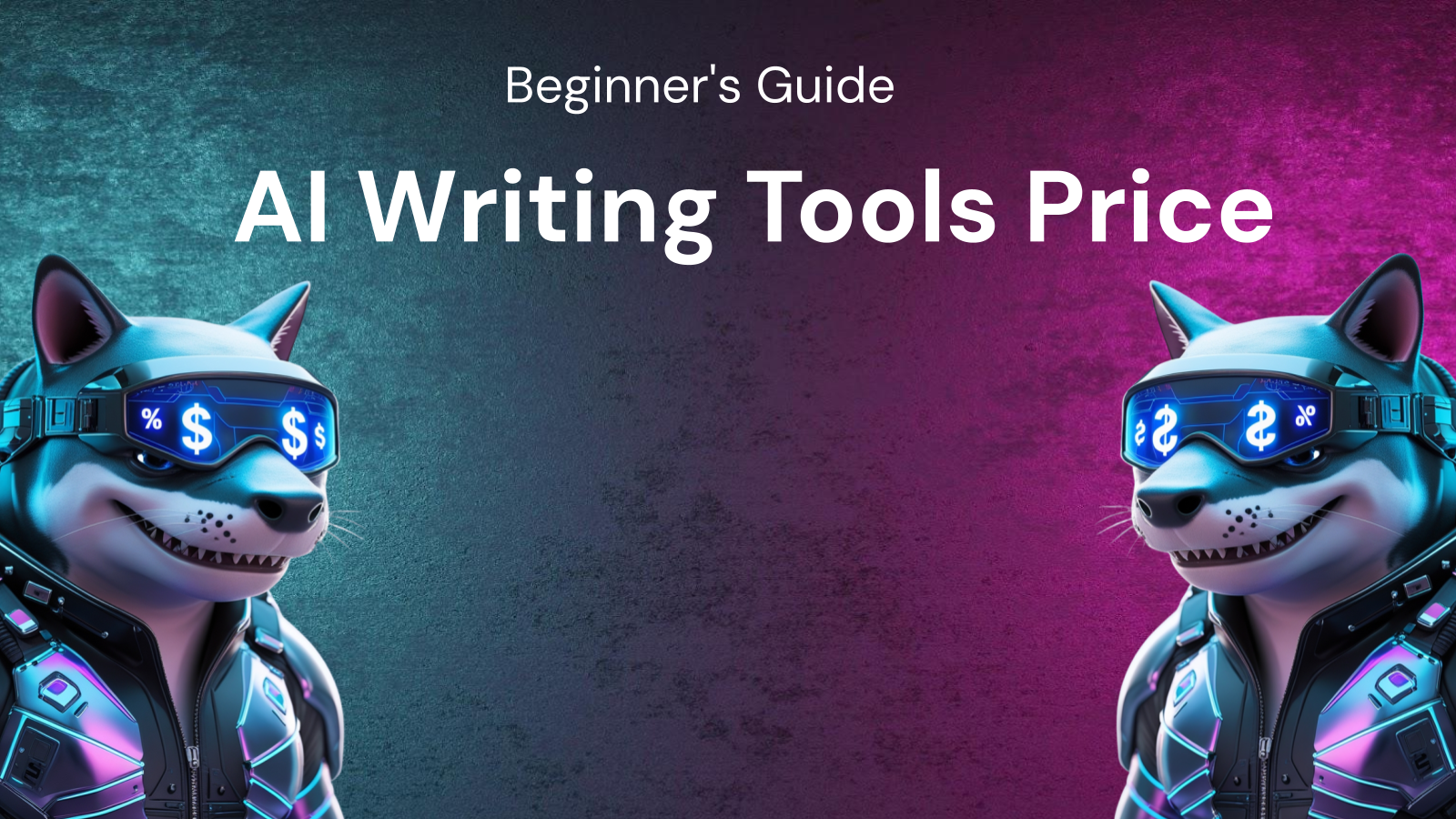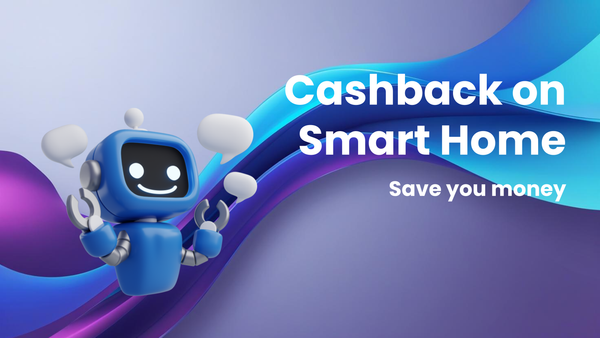Price Tracking for AI Writing Tools: A Beginner's Guide

Price Tracking for AI Writing Tools: A Beginner's Guide
The world of AI writing tools is exploding. From crafting compelling marketing copy to generating engaging blog posts and even assisting with creative writing, these tools are rapidly changing how we approach content creation. However, navigating this evolving landscape can be tricky, especially when it comes to pricing. New tools emerge regularly, and existing ones frequently adjust their pricing models, making it challenging to find the best fit for your needs and budget.
This guide aims to demystify price tracking for AI writing tools. We'll explore why it's crucial, the various pricing models you'll encounter, effective strategies for tracking prices, and essential factors to consider when evaluating the overall value proposition of these powerful tools.
Why Price Tracking Matters: The ROI of AI Writing
Before diving into the specifics of price tracking, it's vital to understand why it matters. In essence, tracking prices is about maximizing the return on investment (ROI) of your AI writing tools. Here's a breakdown of the key benefits:
- Finding the Best Deals: Price tracking allows you to identify sales, discounts, and promotional offers that can significantly reduce your monthly or annual costs. Many companies offer introductory deals or limited-time offers to attract new customers. Keeping an eye on prices ensures you don't miss out on these opportunities.
- Avoiding Price Hikes: AI writing tools are constantly being updated and improved. As features are added and algorithms refined, providers may increase their prices. Tracking prices allows you to anticipate potential increases and make informed decisions about whether to renew your subscription or explore alternative options.
- Budgeting and Forecasting: Understanding the pricing landscape enables you to budget effectively for your content creation needs. By tracking historical price data and analyzing trends, you can forecast future costs and plan your spending accordingly. This is especially important for businesses and organizations with strict budgetary constraints.
- Comparing Tools Effectively: Comparing the features and capabilities of different AI writing tools is only half the battle. To make a truly informed decision, you need to compare their pricing as well. Price tracking provides the data you need to perform an apples-to-apples comparison and identify the most cost-effective solution for your specific requirements.
- Negotiating Better Rates: Armed with price data, you may be able to negotiate better rates with AI writing tool providers. If you know that a competitor offers similar features at a lower price, you can leverage this information to negotiate a discount or special offer.
- Identifying Emerging Trends: Price changes often reflect broader trends in the AI writing market. For instance, a surge in the popularity of a particular type of tool may lead to increased pricing. Tracking these changes can help you stay ahead of the curve and anticipate future developments in the industry.
Understanding the Different Pricing Models
The pricing models for AI writing tools vary significantly. Understanding these models is crucial for accurate price tracking and comparison. Here's a breakdown of the most common models:
- Subscription-Based (Monthly/Annual): This is the most prevalent pricing model. You pay a recurring fee (monthly or annually) for access to the tool and its features. Subscription tiers often vary based on usage limits, such as the number of words generated, projects created, or users allowed.
- Pros: Predictable costs, access to ongoing updates and support, typically includes a range of features.
- Cons: Can be expensive if usage is low, may require a long-term commitment, often have usage limits.
- Pay-as-you-go (Credits or Tokens): With this model, you purchase credits or tokens that are used to generate content. Each word, sentence, or task typically consumes a certain number of credits.
- Pros: Flexible, only pay for what you use, good for occasional users.
- Cons: Can be difficult to predict costs, credits may expire, potential for unexpected expenses if you generate a lot of content.
- Freemium: Some AI writing tools offer a free plan with limited features and usage. This allows you to try the tool before committing to a paid subscription.
- Pros: Free to use, allows you to test the tool's capabilities.
- Cons: Limited features, usage restrictions, may contain watermarks or advertisements.
- Lifetime Deals: Occasionally, AI writing tools offer lifetime deals, where you pay a one-time fee for access to the tool. These deals are often offered through platforms like AppSumo.
- Pros: Cost-effective in the long run, no recurring fees.
- Cons: May not include all future updates, risk of the company going out of business, limited refund policies.
- Custom Pricing: Enterprise-level users often require custom pricing plans tailored to their specific needs and usage patterns. These plans may include dedicated support, custom integrations, and higher usage limits.
- Pros: Tailored to specific needs, dedicated support, high usage limits.
- Cons: Expensive, complex negotiation process.
Effective Strategies for Tracking Prices
Now that you understand the importance of price tracking and the various pricing models, let's explore effective strategies for monitoring prices and identifying the best deals:
- Create a Spreadsheet or Database: Start by creating a spreadsheet or database to track the AI writing tools you're interested in. Include columns for the tool name, pricing model, monthly/annual cost, features, usage limits, and any relevant notes. This will provide a centralized location for all your price data.
- Regularly Visit Pricing Pages: Make it a habit to regularly visit the pricing pages of the AI writing tools you're tracking. Check for any changes in pricing, features, or usage limits.
- Subscribe to Newsletters and Email Lists: Most AI writing tool providers offer newsletters and email lists that announce new features, promotions, and discounts. Subscribe to these lists to stay informed about price changes and special offers.
- Follow Social Media Accounts: Follow the social media accounts of AI writing tool providers to receive updates on price changes, promotions, and industry news.
- Use Price Tracking Websites and Tools: Several websites and tools are designed to track prices for software and online services. Explore these options to automate the price tracking process and receive alerts when prices change. Examples include:
- Distill Web Monitor: A browser extension that monitors websites for changes and sends you notifications when a change is detected.
- Visualping: A similar service to Distill Web Monitor, allowing you to track visual changes on websites.
- Google Alerts: Set up Google Alerts to track mentions of specific AI writing tools or keywords related to price changes.
- Monitor Online Forums and Communities: Online forums and communities dedicated to AI writing tools often discuss pricing and deals. Monitor these communities to stay informed about the latest trends and offers.
- Take Advantage of Free Trials: Many AI writing tools offer free trials. Use these trials to test the tool's capabilities and determine if it's a good fit for your needs before committing to a paid subscription.
- Look for AppSumo Deals: As mentioned earlier, AppSumo often offers lifetime deals for AI writing tools. Check AppSumo regularly to see if any of the tools you're interested in are available at a discounted price.
- Track Historical Data: Keep a record of past price changes to identify trends and anticipate future price increases. This will help you make informed decisions about when to subscribe or renew your subscription.
- Utilize Comparison Websites: Several websites specialize in comparing AI writing tools and their pricing. These websites can be a valuable resource for quickly comparing different options and identifying the most cost-effective solution.
Beyond Price: Evaluating the Overall Value Proposition
While price is undoubtedly an important factor, it's crucial to consider the overall value proposition of an AI writing tool before making a decision. Here are some key factors to consider:
- Features and Capabilities: Evaluate the features and capabilities of the tool and determine if they meet your specific needs. Does it offer the types of content generation you require? Does it support the languages you need? Does it integrate with your existing workflow?
- Quality of Output: Assess the quality of the content generated by the tool. Is it accurate, well-written, and engaging? Does it require extensive editing and revision?
- Ease of Use: Consider the ease of use of the tool. Is it intuitive and user-friendly? Does it require extensive training or technical expertise?
- Customization Options: Evaluate the customization options offered by the tool. Can you customize the tone, style, and format of the content generated?
- Integration with Other Tools: Determine if the tool integrates with your existing tools and platforms, such as your content management system (CMS), social media management platform, or email marketing software.
- Customer Support: Consider the quality of customer support offered by the provider. Is it responsive and helpful? Do they offer comprehensive documentation and tutorials?
- Security and Privacy: Evaluate the security and privacy policies of the provider. How do they protect your data? Do they comply with relevant data privacy regulations?
- Scalability: Consider the scalability of the tool. Can it handle your growing content creation needs? Does it offer flexible pricing options that can accommodate your changing usage patterns?
- User Reviews and Testimonials: Read user reviews and testimonials to get an idea of other users' experiences with the tool.
- Long-Term Viability: Research the company behind the tool to assess its long-term viability. Is it a well-established company with a strong track record? Does it have a clear roadmap for future development?
Example Scenario: Price Tracking in Action
Let's say you're a marketing manager looking for an AI writing tool to help you generate blog posts and social media content. You've identified three potential options: Tool A, Tool B, and Tool C.
- Create a Spreadsheet: You create a spreadsheet to track the pricing and features of each tool.
- Gather Initial Data: You visit the pricing pages of each tool and record the monthly cost, usage limits, and key features.
- Subscribe to Newsletters: You subscribe to the newsletters of each tool provider to receive updates on promotions and discounts.
- Monitor Social Media: You follow the social media accounts of each tool provider to stay informed about price changes and industry news.
- Track Prices Over Time: Over the next few weeks, you track the prices of each tool and notice that Tool B is offering a 20% discount for new subscribers.
- Evaluate Value Proposition: You compare the features, quality of output, and ease of use of each tool and determine that Tool B offers the best combination of price and value.
- Make a Decision: You decide to subscribe to Tool B, taking advantage of the 20% discount.
Conclusion: Mastering the Art of AI Writing Tool Price Tracking
Price tracking for AI writing tools is an ongoing process that requires diligence and attention to detail. By understanding the different pricing models, implementing effective tracking strategies, and considering the overall value proposition of each tool, you can make informed decisions that maximize your ROI and unlock the full potential of AI-powered content creation. The AI writing landscape is constantly evolving, so staying informed and adaptable is key to success. Remember that the "best" tool isn't always the cheapest, but the one that provides the most value for your specific needs and budget. By mastering the art of price tracking, you'll be well-equipped to navigate this exciting and rapidly changing world.




